Tichenor, Bridget Bate Chisholm
British, (1917-1990)
Scroll down for more links at bottom of page
Bridget Bate Tichenor was born Bridget Pamela Arkwright Bate in Paris, France November 22, 1917 and died in Mexico City, Mexico October 12, 1990 at the age of seventy-two. She was a Mexican Surrealist painter of Fantasy Art in the school of Magic Realism and a Fashion Editor. Born in France and of British descent, she later embraced Mexico as her home.
She was the daughter of the Virginia born American NBC, World War I correspondent Frederick Blantford Bate and Sarah (Vera) Gertrude Arkwright Bate Lombardi, who were married after Bridget’s birth in 1919. Fred Bate was responsible for the first radio broadcast news via Alistair Cooke of King Edward VIII’s abdication and proposed marriage to Wallis Simpson in 1936. Vera was a nurse at the American Hospital in Paris in 1915 when she first met Bate, who was a US Army officer at the time.
Vera was reputed to be the illegitimate daughter of HSH Prince Adolphus, 1ST Marquess of Cambridge, Duke of Teck, and younger brother of Queen Mary of Teck. Vera’s mother was Rosa Frederica Baring of the Baring Brothers & Co. banking family. The Baring family had a long established history of assisting the British Royal family with various loans and was closely tied in business. Princess Diana of Wales was a Baring descendent, and therefore a relation of Bridget Bate Tichenor.
Coco Chanel’s admirer Comte Leon de Laborde introduced Vera to Chanel while she and Chanel worked as nurses at the American Hospital in Paris in 1915 during WW I. Vera later became the public relations liaison to the royal families of Europe for Coco Chanel between 1925 and 1938.
Vera was the muse and inspiration for Chanel that established the Chanel “English Look” and brand, based upon Vera borrowing riding tweeds from her uncle the Duke of Westminster and jewels from her aunt Queen Mary that she and Chanel costumed together at dinner party pranks in Scotland. Vera’s persona became Chanel’s professional identity that she assumed until she died. The Chanel man-tailored tweed suit accessorized with over-scaled paste jewelry that defined Chanel was founded upon Vera Bate Lombardi and her family’s wardrobe.
Vera Arkwright was socially recognized as the granddaughter of the 1st Duke of Cambridge and therefore a descendant of George III, which was not true, as Fitzgeorge never legally adopted her after her mother divorced Colonel Arkwright. According to Bridget, there were illegitimacies both in Vera’s bloodline and in reference to her mother’s second husband that confused many a genealogist and biographer. There have been Chanel biographies suggesting that Vera’s birth certificate documented that she was the daughter of a stonemason, which is incorrect.
Bridget once stated, “Vera was born in the same year of Rosa’s divorce from Colonel Arkwright in 1885, and Vera was a child that represented a pawn on a royal chess-set for Rosa. The truth all became so muddled as Rosa married the illegitimate 1st Duke of Cambridge. The gossip in Europe was that I was Chanel’s illegitimate child, as I was born two years before my parent’s marriage. Some people continue to say that Comte Leon de Laborde and Chanel were my true parents. Now seriously, do I resemble Mme. Chanel? This whole matter has to do with Granny Rosa’s affair with an under-aged royal.”
Vera introduced Chanel, her constant companion, to her cousin the Duke of Windsor, which followed with Archies, Duffs, Winstons, Harolds, and many other sophisticated aristocrats for Chanel’s social and business ascent. Chanel had indigent origins and required Vera’s entrée and persona, which she maneuvered and assimilated to found a Chanel fashion standard that would insure her success in royal circles and perpetuate the Chanel name.
After 4 years of professional separation, in 1943, Chanel sought collaboration with Lombardi in Rome to access Lombardi’s relative Sir Winston Churchill in the Walter Schellenberg Nazi plot “Operation Modellhut” under the guise of requesting Lombardi return to work for the House of Chanel in Paris. When Vera refused to comply with Chanel’s request to come to Paris; she was arrested as an English spy and thrown into a Roman prison of the worst kind by the Gestapo.
Finally, she agreed to fly to Austria only if escorted by two aristocrat friends of the palazzo set and her pet Calabrian Mastiff dog. The long-legged dog, the size of a bull calf was too big for the small plane that could only hold the SS pilot, her friends Prince Bismarck and Lady Windischgraetz, and herself. Taege had to remain behind in Rome.
At the end of their relationship, Vera exposed Chanel’s “Modellhut” war crime in a plot devised by Chanel’s Nazi lover to assassinate Sir Winston Churchill and declared her a Nazi spy directly to Churchill while she and Chanel where in Spain in 1944. Chanel was known to sacrifice anything for her own personal gain. Chanel was arrested by the Americans, but later dismissed of espionage charges through the British Royal family. Had Chanel been brought to trial, it would have exposed some of the British Royal Family Nazi alliances, such as the Duke of Westminster. Chanel lost Vera and her name was tarnished until the 1950’s.
Bridget Tichenor was married two times. In 1938 she married poet and International Paper Company heir Hugh Joseph Chisholm in New York City in an arranged marriage by her mother Vera through an introduction made by Cole Porter and his wife Linda Lee to remove Bridget from the looming WW II in London. In 1940, she and Chisholm had a son in Beverly Hills, California named Jeremy Chisholm who died in 1982. In 1943, she became a student at the Arts Students League of New York under Reginald Marsh with fellow artists George Tooker and Paul Cadmus.
Hugh Chisholm was working overseas in Rome when she met Jonathan Tichenor, the assistant to photographer George Platt Lynes in New York City. They started an affair in 1944, and she divorced Chisholm and married Jonathan Tichenor in 1945. It was rumored that Chisholm was simultaneously involved in an affair with playwright Patrick Dennis (writer of Auntie Mame 1955) that broke the marriage with Bridget. She was engaged to a childhood friend of her mother, who was Italian Prince in Rome in 1983, where she briefly lived at the Hassler Hotel that ended with her return to Mexico in 1984.
Tichenor was the subject of a 1985 documentary titled Rara Avis, shot in her friend anthropology historian Baron Alexander von Wuthenau’s home in Mexico City. It was directed by Tufic Maklouf and focused on Tichenor’s life in Europe, her being a subject for the photographers Man Ray, Cecil Beaton, Irving Penn, John Rawlings, George Platt Lynes, her career as a Vogue Fashion Editor in New York with Condé Nast Art Director Alexander Lieberman between 1945 and 1952, and her Magic Realism painting career in Mexico that began in 1953. The title of the film, Rara Avis, is Latin meaning a rare and unique thing or person.
Tichenor attended schools in France, Italy, and England, living in the homes of her mother’s relatives such as the Duke of Westminster in England and France, the Savoia family in Rome, and the Agnelli family in Florence until she was sixteen when she went to live with Vera in Paris and work as a model for Chanel. She was mentored in drawing and painting by Di Chirico at a young age in Italy, and later influenced by her mother’s friend Lenora Fini. Tichenor worked as a Fashion Editor at Vogue magazine in New York from 1945-1952.
Mesoamerican cultures, spiritism, shamanism, metaphysics, and her international background of world cultures and religions would influence the style and themes of Tichenor’s work as a Magic Realist painter in Mexico. Tichenor’s painting technique was based upon 16th century Italian Tempera formulas that Paul Cadmus taught her in New York, where she would prepare an eggshell-finished gesso ground on masonite board and apply, instead of tempera, multiple jewel-like and transparent oil glazes with sometimes one hair of a #00 sable brush.
Tichenor was among a group of Surrealist and Magic Realist female artists who came to live in Mexico in the late 1940s and early 1950s. Her introduction to Mexico occurred when she lived in California during the War years of the early 1940’s through her cousin Edward James, who was living between Los Angeles and Mexico. Edward James, the British Surrealist art collector and sponsor of the magazine Minotaure that was published in Paris, invited Tichenor, along with Leonora Carrington, to Mexico several times. Bridget’s life-changing epiphany occurred during an ancestral spiritual ceremony with James at his home in 1947. James lived in Las Pozas, San Luis Potosi, Mexico from the early 1940’s, and his home had an enormous Surrealist sculpture garden with natural waterfalls, pools and Surrealist sculptures in concrete. Tichenor had first met him in Paris in the 1930s. Carrington painted a mural at Las Pozas as a gift to James.
After visiting Mexico again through invitations of her friends artist Diego Rivera, architect Luis Barragan, and Mathias Goeritz in the early 1950’s, she obtained a divorce from her second husband Jonathan Tichenor and moved to Mexico in 1953, where she made her permanent home and lived for the rest of her life. She left her marriage and job as a professional fashion and accessories editor for Vogue behind and was now alongside expatriate painters such as Carrington, Remedios Varo, Alice Rahon, and photographer Kati Horna living in the magic of Mexico. The French Philosopher Andre Breton, who was instrumental in Carrington’s career said, “Mexico is a surreal place where the people live surreally.”
In 1958, she participated in the First Salon of Women’s Art at the Galerías Excelsior of Mexico, together with Carrington, Rahon, Varo, and other contemporary women painters of her era. In 1960, she bought the ‘Contembo’ ranch near the remote pre-Columbian village of Ario de Rosales, Michoacán where she painted reclusively with her extensive menagerie of pets and numerous servants until 1978.
Ario de Rosales was named “Place where something was sent to be said” in the Purepecha language. Tichenor in essence was an artistic channel for the powerful spiritual vortex that she chose to call her home. She produced paintings that embraced and reflected a divinely supernatural world that was beyond the emotional or mental content of the Surrealist’s of her day. She did not like being called a Surrealist as she said her work was of a spiritual nature and contained the alchemy of ‘magic’. She adored Remedios Varo, and Carrington followed in her preference for artists that she was close to. Varo was more spiritual to Tichenor than Carrington, yet Carrington and she shared many technical commonalities that are evident in their painterly works of art.
Many of the faces and bodies of Tichenor’s magical creatures in her paintings were based upon her assorted pet Terriers, Chihuahuas, Italian Mastiffs, sheep, goats, monkeys, parrots, iguanas, snakes, horses, cows, and local Purepecha Indian servants and friends.
The masks that she painted were symbolic of the many mysterious facets of her extraordinarily diverse spiritual perceptions that she would hide both her acute emotional vulnerability and the awesome power of her soul behind, which she chose to express only in her sacred art.
The landscapes of Tichenor’s paintings were inspired by the topography of the volcanic land that surrounded her mountaintop home, ‘Contembo’. There was a curvature of the earth that could be seen from her second-story studio where the pine tree covered venetian red mountains cascaded towards the Pacific Ocean. The days would build with sun blazed brilliant color in a luminous heat from the contrasting dark grey-green cold nights. There also was a magnificent waterfall with turquoise pools of water that traversed her property in a stream of liquid light that appeared to come directly from Heaven.
Tichenor counted painters Leonora Carrington, Alan Glass, and Pedro Friedeberg amongst her closest friends and artistic contemporaries.
After a series of life-shattering events that began with her former lover Patrick Tritton’s ill negotiated sale of her beloved painting by Di Chirico in 1976, her son’s death and the family events that surrounded it in 1982, and culminating in the sudden and untimely death of her Italian fiancé and the proceedings of his family to exclude her from the estate in Rome 1984, Tichenor became emotionally exhausted and began to physically deteriorate. Although apathetic about her fated return to Mexico, she continued to paint and lived her last years with her English Bulldog ‘Bi Bi’ in a home built to her specifications in San Miguel de Allende, Guanajuato, Mexico by her close friend the late Swedish shipping owner Eric Noren.
At the time of Tichenor’s death at Hospital Londres and finally at the De Laborde-Noguez residence in Mexico City in 1990, she chose to be exclusively with her intimate friends Pedro Friedeberg, Tobey Titus, Eric Noren, Jon Lightfoot, Countess Bachu Woranzow, Alan Glass, and the De Laborde-Noguez family.
It is interesting to note that Tichenor’s mother Vera Bate Lombardi was a close friend of Comte Leon de Laborde, who was the most fervent admirer of Coco Chanel in her youth; and his descendants became Tichenor’s most respected allies, trusted friends, and caretakers at the end of her life in their home in Mexico City, Mexico.
Bridget’s paintings were first sold in 1954 by the Ines Amor Gallery in Mexico City, and then later by her beloved patron, the late Mexican art dealer and collector Antonio de Souza at the Galeria de Souza, Paseo de la Reforma 334-A, Berna 3, Mexico D. F., Mexico. In 1955, the Karning Gallery, directed by Robert Isaacson, represented her. In 1972 and 1974 she exhibited at the Galeria Pecanins, Durango, 186, Colonia Roma, Mexico D.F, Mexico 6700.
Her last exhibition was a comprehensive retrospect at the Instituto de Bellas Artes de San Miguel de Allende in February 1990 Her works became a part of important international private and museum collections in the United States, Mexico and Europe that included the Churchill and Rockefeller families.
Bridget’s paintings are sought after for their rare and refined esoteric nature with superlative detail in master painting technique. She left 200 paintings upon her death that were divided between Pedro Friedeberg and the De Laborde-Noguez family.
Interest in her work by art collectors and museums has been increasing greatly in recent years. Christie’s auctioned two paintings by Tichenor in July 2007 at New York’s Rockefeller Plaza, and both received nearly 10 times the original estimates in the auction of Mexican actress María Felix’s estate.
The Museo de Arte Contemporáneo de Monterrey held an exhibition of Bridget’s work in 2008, with the inclusion of her paintings amongst 50 prominent Mexican artists, including the renowned Frida Kahlo. It was titled “History of Women: Twentieth-Century Artists in Mexico.” The exhibition centered on women who had developed their artistic activities within individual and diverse disciplines while working in Mexico.
Daughter-in-law, Jeanne Chisholm, is the sole legitimate family member that represent herself as a consultant regarding Bridget’s life, career, and art.
Contact details: info@chisholmgallery.com
Mobile: 845.505.1147
Links
Vogue | A Former Vogue Editor’s Surrealist Paintings Come With a Gripping Backstory
RARA AVIS – A Documentary about Bridget Bate Tichenor
Produced and Directed by Tufic-Makjlouf
Bridget Bate Tichenor YouTube Videos
Antiques Roadshow | Appraisal: 1965 Bridget Bate Tichenor “¿Será Cierto?”
The Surrealism Website | Bridget Tichenor
Bridget Tichenor Retrospective at the Museum of the City of Mexico
The Museum of the City of Mexico’s director, Cristina Faesler, has organized over 100 paintings for an exhibition dedicated to Tichenor in Mexico City beginning May 23, 2012 to August 5, 2012. The exhibition at the Museo de la Ciudad de México is a visual monograph of Tichenor’s work, her surrealist vision and technique.
Video by Diego García Sotomoro.
Hope College Digital Archive – Bridget Bate Tichenor – Surrealist Woman Arts
Created by Professor Maria Claudia Andre.
There have been very few writings that focus on the life and work of Bridget Bate Tichenor, also known as B.B.T., which makes the telling of her story that much more fascinating…
Huffington Post – 7 Forgotten Women Surrealists Who Deserve To Be Remembered
– View Bridget Bate Tichenor Excerpt
Levitra 20 mg online http://totalfootcareclinics.com/levitra.html
Huffington Post – Magic Realist Painter Bridget Tichenor at Museo de la Ciudad de Mexico
MIDNIGHT IN CONTEMBO – THE LIFE OF BRIDGET BATE TICHENOR – A Feature Film
Bridget Bate Tichenor – The Magic Realist Painter
by Zachary Jay Selig
The First Biography of the Life of Bridget Bate Tichenor, by Zachary Jay Selig on Scribd:
Chapter II: The High Priestess and her Protege
Chapter V: Contembo Technique – An Artist’s Destiny in Mexico
Chapter VI: Anglophiles in Mexico
Chapter VIII: The Maharaja’s Emerald Button
Chapter XII: Ascension
Suhagra http://www.healthfirstpharmacy.net/suhagra.html
Bridget Bate Tichenor article at The Wayward Ways of Russell C.J. Duffy
Surrealist Fashion Icons: Varo, Carrington, Tichenor & Agar
Jeanne Chisholm’s Correspondences concerning Bridget Bate Tichenor and Hugh
Chisholm
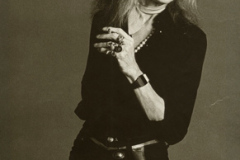
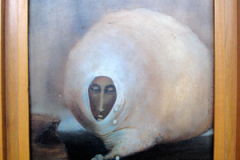

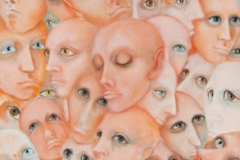
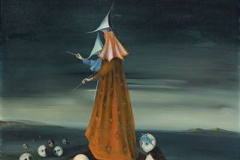



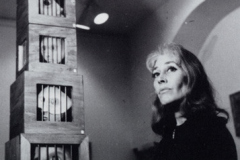

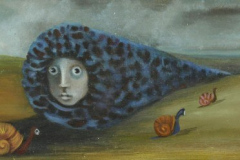
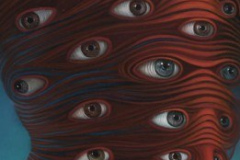


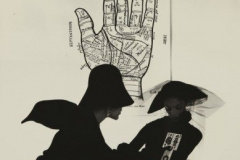
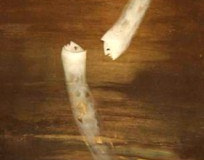
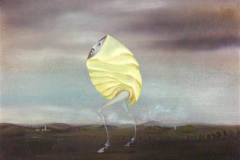

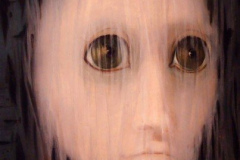
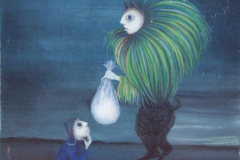
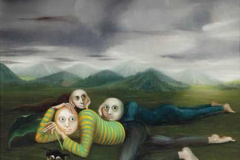



Social Media
Friend Us on Facebook Link With Us on LinkedIn Follow Us on Twitter Join me on Pinterest Join me on Google Plus